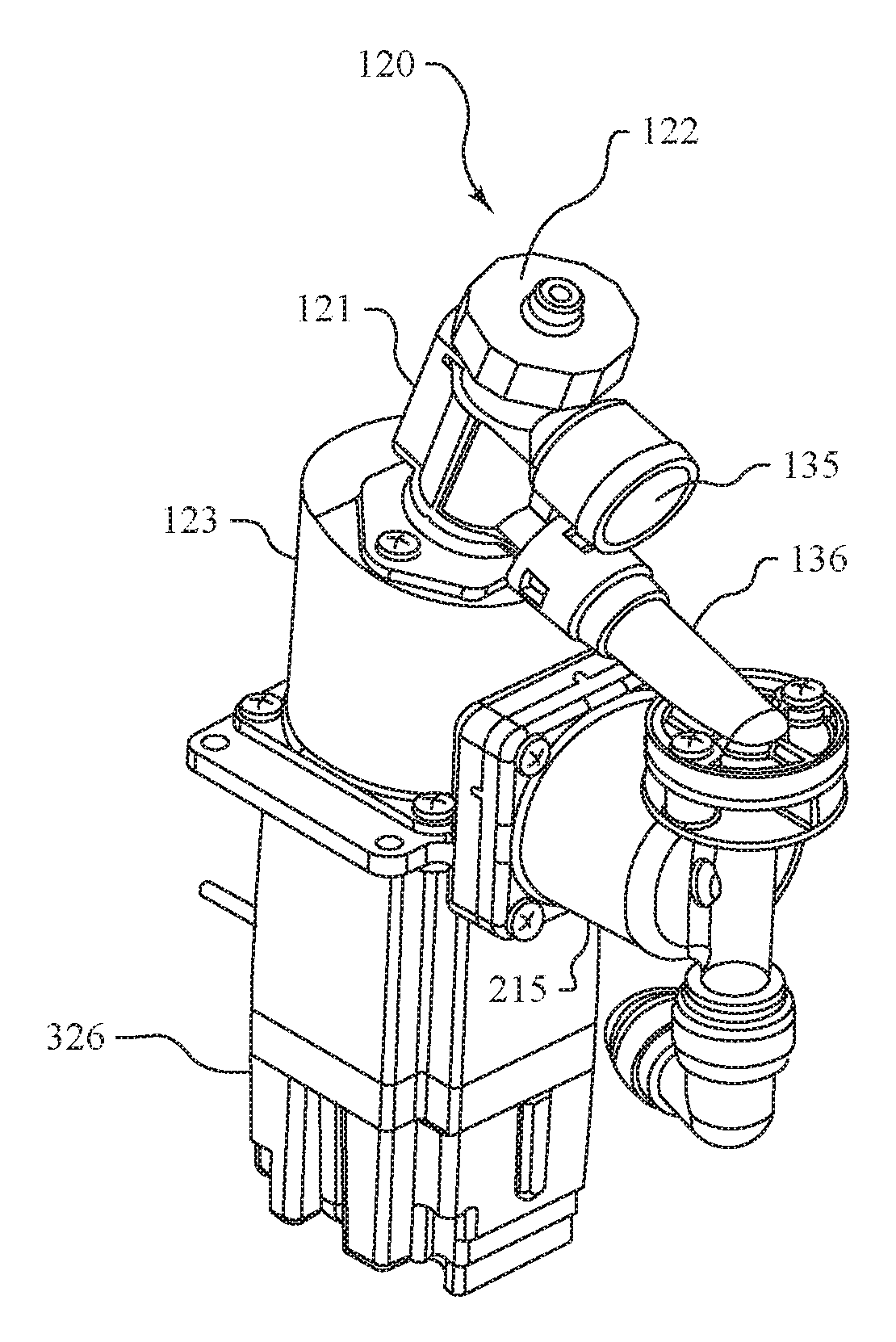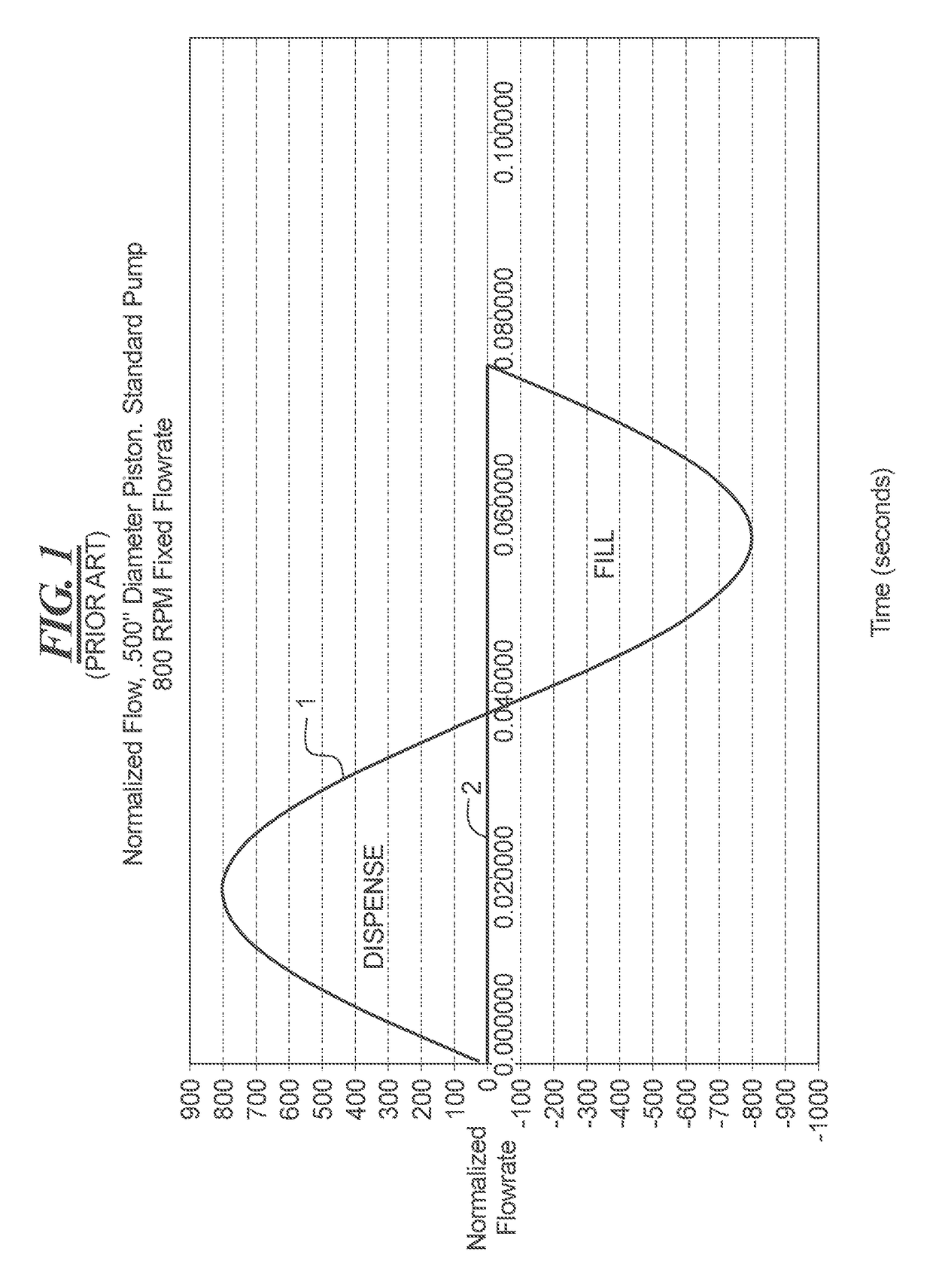Tri-chamber nutating pump
a nutating pump and chamber technology, applied in the direction of piston pumps, positive displacement liquid engines, pump components, etc., can solve the problems of inability to use a partial revolution, and inability to accurately dispense fluid from the nutating pump
- Summary
- Abstract
- Description
- Claims
- Application Information
AI Technical Summary
Benefits of technology
Problems solved by technology
Method used
Image
Examples
Embodiment Construction
[0057]A nutating pump 120 is illustrated in FIGS. 8-9. The nutating pump 120 includes the basic features of the nutating pump as shown in FIGS. 5-6 and these features are identified using the reference numerals of FIGS. 5-6 with the prefix “1”, e.g., the pump housing 121 as opposed to the pump housing “21”. The nutating pump 120 includes a pump housing 121 that is coupled to an enclosure 122. The nutating pump 120 also includes an intermediate housing 123, which encloses the coupling 124, the proximal end 126 of the nutating piston 110 and the cam 201, which is also illustrated in FIGS. 22-23.
[0058]The intermediate housing 123 also encloses a shroud 202, which provides dust protection for the various mechanical components disposed in the intermediate housing 123. The shroud 202 is utilized because the nutating pump 120 may be used to dispense colorants. For example, tints or colorants used to add color the white base material of a paint mixture can generate dust if the solvent evapo...
PUM
 Login to View More
Login to View More Abstract
Description
Claims
Application Information
 Login to View More
Login to View More - R&D
- Intellectual Property
- Life Sciences
- Materials
- Tech Scout
- Unparalleled Data Quality
- Higher Quality Content
- 60% Fewer Hallucinations
Browse by: Latest US Patents, China's latest patents, Technical Efficacy Thesaurus, Application Domain, Technology Topic, Popular Technical Reports.
© 2025 PatSnap. All rights reserved.Legal|Privacy policy|Modern Slavery Act Transparency Statement|Sitemap|About US| Contact US: help@patsnap.com



